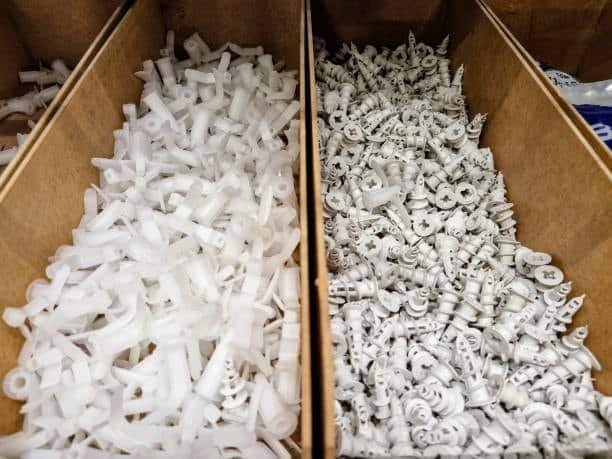The detailed comparison of Nylon vs Delrin materials with properties, of usage, prices, and performance. Techno guide on the engineers and manufactures that have to choose between this engineering plastics.
The decision in using nylon or Delrin (POM – Polyoxymethylene) in engineering may greatly affect the performance of a product, cost, and the processes of its production. To be used as high-performance engineering thermoplastics, both materials retain different properties, including high temperature resistance which make them fit in various applications. This definitive review explores the core variances, strengths and best applications of both materials so that the engineers, manufacturers and procurement officer would make viable decisions that meet specific requirements .
About GWT Worldwide: Shenzhen Guanwutong International Freight Forwarding Co., Ltd. (GWT Worldwide) is a professional logistics service provider that focuses on the provision of global freight forwarding services, supply chain solutions and cross-border e-commerce logistics. Knowing the air freight, sea freight, China-Europe railway transport, and the Amazon FBA logistics, we assist companies across the globe to move matters and commodities hassle free across borders with complete custom clearance and warehousing services, highlighting the benefits of streamlined logistic .
Understanding the Fundamental Properties of Nylon and Delrin
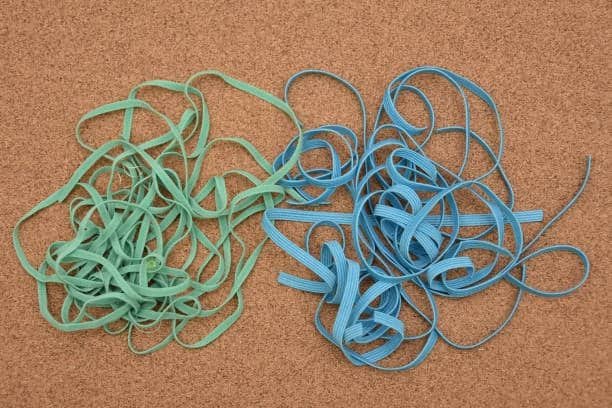
DuPoint based their development of nylon (a family of synthetic polymers named polyamides) in the 1930s, and since then it has become one of the most prolific engineering plastics. These have the most widely produced types, Nylon 6/Nylon 6 and Nylon 12 whose properties vary slightly due to molecular structure. Nylon has got very high tensile strength, flexibility and wear resistance, and could be used in applications where the materials are expected to be durable and have high temperature resistance and impact resistance.
Delrin which is the trademark of the acetal homopolymer made by DuPont, is a member of the family of polyoxymethylene (POM). This thermoplastic crystalline material has excellent dimensional stability, low friction coefficient, better creep resistance, and is renowned for its excellent chemical resistance. The chemical resistance of Delrin is outstanding and it has stable properties over a broad temperature spectrum making it suitable as any precision mechanical component.
The main contrasts also include being in their chemistry: nylon is composed of amide substances that are capable of soaking up moisture whereas Delrin material is built on the basis of acetal substance that is not as much affected by moisture. This difference in moisture absorption has a huge implication on their performance properties and use worthiness. These baseline properties are important when one is to make the right material choices during engineering endeavours.
Mechanical Properties Comparison: Strength, Durability, and Performance
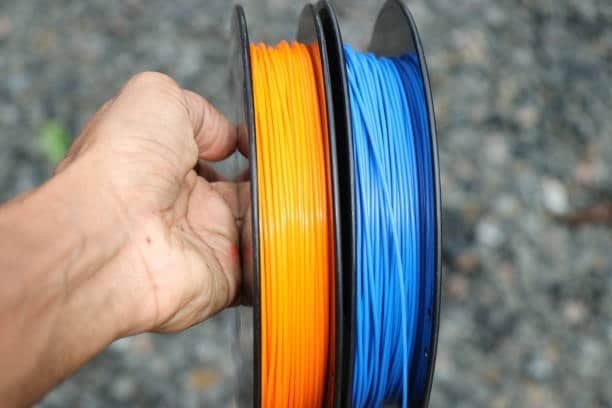
Compared to the mechanical properties, the two materials are excellent and distinct in other aspects. Nylon, in general, possesses greater tensile strength of between 70-85 MPa (in regular grades) as opposed to Delrins 60-70 MPa. Delrin however has better dimensional stability and less creep under long term loads thus being more applicable in applications that require higher precision under tight tolerances over a long term basis compared to other plastics .
The flexibility of nylon offers an advantage over its use where impact resistance and fatigue resistance is an important factor. Its tendency to flex rather than break gives it good applications in living hinge, flexible couplings, and to the components that undergo repetitive and flexing/deforming stress cycles. The amount of stretch at break of the material is present between 30-100 percent, depending on particular grade and environmental parameters.
Delrin is very suitable in circumstances where load assuming performance is necessary, especially in automotive components . It has excellent creep resistance which implies that components do not change shape and size over time even when they are constantly stressed. The elastic modulus of the material is, at a given temperature, fairly independent of the temperature hence reliable performance in the rigorous uses. This smoothness is of great value in precision mechanical assemblies where assemblies are tolerant of dimensional accuracy.

Both materials have good wear strength, but they behave dissimilarly at different conditions. Nylon and Delrin are self-lubricating, which makes nylon perfect in a sliding application and Delrin with a low coefficient of friction and resistant to stick-slip ideal as being smooth and mechanical design in gear teeth, cams and bearings, unlike other types of material .
Chemical Resistance and Environmental Performance Factors
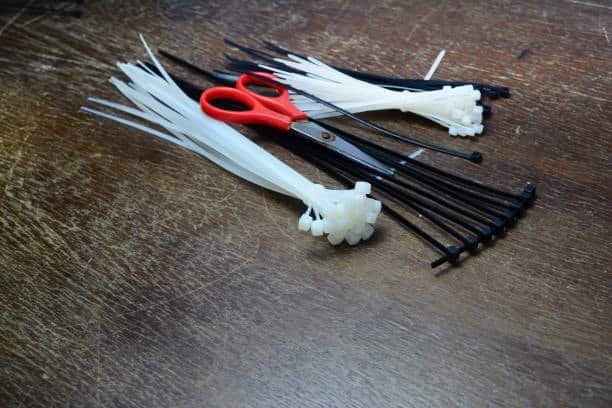
Another major distinction of nylon and Delrin is the chemical resistance. Delrin shows outstanding performance to the majority of organic solvents, fuels, and most chemicals, and accordingly, it can be used in automotive fuel systems, chemical processing equipment, and general environments where exposure to aggressive substance is frequent. It is of special value in sometimes hostile chemical environments because of its resistance to hydrocarbons, alcohols and weak acids.
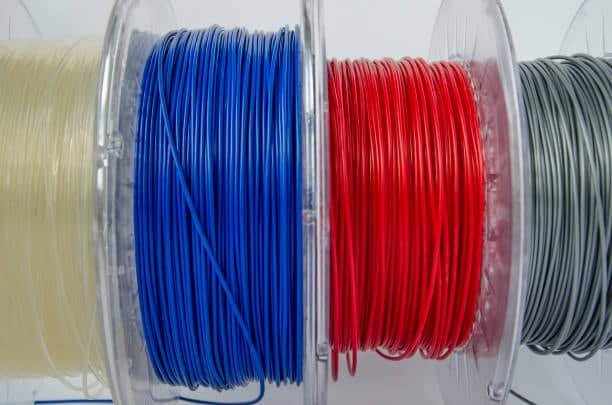
The chemical resistance of nylon is very varied and depends on a particular variety and environment. Although it is fairly resistant to oils, greases and most organic solvents, it might be susceptible to strong acids and bases, which can affect its hardness significantly . Even though, nylon tends to overcome alkalis better than Delrin, it is more likely to be used in situations where it has to be exposed to basic solutions.
Perhaps the most important aspect on the environment relates to the absorption of moisture. Nylon is moisturizing, so it gains moisture in the surrounding atmosphere, which will result in dimensional variation and mechanical property change. In precision applications, nylon components are subject to swelling due to this moisture absorption, and this may have effects on fit and performance. The rate of absorption differs in different types of Nylon, whereas Nylon 12 is less absorbent compared to Nylon 6 or 6/6.
Delrin takes on less than 0.2 percent moisture and hence uniform dimensional stability in varying hygrothermal conditions. This property contributes to its durability, making it irreplaceable in terms of precision application in different environmental scenarios e.g. outdoor equipment, maritime applications and parts with the need of maintaining stable performance under different environmental conditions.
Temperature Performance and Thermal Characteristics
At a lot of applications the ability of materials to perform at desired temperatures is a major factor of influence. Delrin retains its mechanical properties over a wider temperature range, the continuous usable working temperature generally being -40 o C to 100 o C, and the short term exposure up to 140 o C. It has great dimensional stability as its crystals remain stable despite the changing temperatures and therefore, it is suitable in applications where thermal cycling take place.
Temperature performance in nylon is determined by grade, which can be used continuously across temperature ranges of -40 o C to 80 o C and more. Glass-filled nylon grades can, however, greatly widen this range, and some grades will work continuously up to 150 o C. The thermal expansion coefficient of the material is tending to be more than that of Delrin, and should be considered in those situations where close tolerances must be maintained with the change in temperature.
The two materials have a fine thermal conductivity in plastics with Delrin generally having a good heat dispense quality. The feature can be significant where thermal accumulation could cause a problem or wastage of components. Delrin is also highly thermally stable resulting in its use in automotive under-hood applications, electronic housings as well as industrial equipment in areas that require elevated temperature performance.
Thermal processing is also quite different. The processing conditions needed to process a Delrin product are also more precise than the nylon product as Delrin is prone to thermal degradation at high temperature. Such disparity can affect the costs and complexity of the manufacturing process, especially in complex shapes or thin walled parts when combined with other materials.
Manufacturing Considerations: Machinability and Processing
The properties of manufacturing are an important aspect of determining what materials are selected, and cost, and even whether production is feasible. Delrin is also highly machinable – machined parts, including gears and rollers, have clean cut surfaces, smooth surfaces and fine tolerances. Little tendency to heat in the process of machining minimizes chances of heat damage and also paves way to high speed machining. The material can be machined like the metal and so it is familiar to the traditional machinists.
Machinability Nylon is greatly affected by the level of moisture and the exact grade. Nylon is a good dry machining material, however, nylon that has absorbed moisture may be a more difficult material to machine cleanly because it produces long, stringy chip, especially when using fiber reinforced grades . Flexibility of the material might also cause chatter or vibration during machining and cutting parameters and methods of soft fixturing should be selected very carefully.
The injection molding properties of the materials are quite different. Compared to Nylon, the processing is usually less complicated and has larger processing windows and improved flow qualities, which makes it applicable in intricate, thin-walled components. Its capacity to fill mold detail creates popularity in complex geometries, and multi component applications.
Delrin is more vulnerable to thermal degradation and hence during injection molding it needs a finer control in processing. It also yields great surface finish and dimensional accuracy of parts when processed in a right way. Low rate of shrinkage and predictable shrinkage can be realized making the material ideal in producing precision molded items that are suggested to be within very tight tolerances.
Application Areas and Industry-Specific Uses
The car industry uses both of them but in different applications depending on the properties of each material. Delrin is extensively used in fuel system components, door handles, window mechanisms and precision mechanical applications, and is used extensively where dimensional and chemical stability is of the essence for different products. Its capability of ensuring that there is performance in automotive fluids and different temperatures, while maintaining a lightweight profile, renders it as being essential in most under-hood operations.
Nylon virtually controls those applications where they are used in the form of flexibility, impact property and cost-effectiveness. In automotive applications they are used as air intake manifolds, engine covers, radiator tanks and structural parts. The strength-to-weight ratio of the material is very good and its ease of processing make it useful in producing light parts in automobiles that help in saving fuel melting point.
Delrin is suited to precision mechanical products found in industrial machinery as gears, cams, rollers, and bearings, where tolerances and performance during operation are very demanding. It has a very low coefficient of friction, and very good wear resistance, hence can effectively replace metal parts in many applications, frequently leading to a quiet operation or being able to do away with the need to grease the parts power frequency.
Delrin commonly finds use in consumer electronics, appliances and other precision mechanical assemblies, and nylon typically serves different structural applications or housings. Delrin dimensions stability and low outgassing in sensitive portions makes the electronics sector of applied industry quite pleased with its lines, and nylon impact resistance and range of processing applications, including those reinforced with fiber, cause it to fit protective housings and structural components uv radiation.
Анализ затрат и экономические соображения
The cost of materials is only one element of the total cost of a product and the processing, and tooling and performance values may dominate over differences in the prices of the raw materials unique properties. In most cases, nylon is cheaper on the cost of raw materials than Delrin especially on standard grades and high publication materials. It is this cost advantage that makes nylon very appealing in price-sensitive usage where the performance attributes of the nylon match the requirements both nylon.
The advantage of Delrin is normally its better performance with considerable processing advantages to justify its greater material cost. The remarkable machinability of the material may save costs of manufacturing due to shorter cycle times and a decreased amount of tooling wear industrial applications. It also has dimensional stability which is able to get rid of secondary operations that moisture sensitive materials such as nylon usually need.
The cost of ownership issues should be considered altogether, like how long the component will last and how much maintenance it can require as well as how consistent it will be in its performance on the long run. In the more demanding applications, its enhanced dimensional stability and chemical resistance may also offer a greater service life, which could be cost effective, although Delrin is comparatively expensive. It can also lower the quality control expenses and warranty matters through its steady performance.
The effect of volume has an important effect on cost comparison. Many applications, in high volumes, give cost advantages to Nylon due to its wide availability, well established supply chains. Delrin can, however, help tolerate the difference in cost of materials in precision applications that must have close tolerances and rework rate very low by its processing efficiency and minimized waste generated.
Making the Right Choice: Selection Criteria and Decision Framework
Among nylon and Delrin, the selection has to be done based on serious consideration of the needs of the application, the environment, and economic considerations. Delrin is best for applications that hold dimensional stability and resistance to chemicals and precision mechanical use, whereas nylon is used in those applications that necessitate impact resistance, flexibility and affordability.
Environmental conditions are also very important in the selection of materials. Delrin tends to be used where the environment is high humidity, exposure to chemicals or where the application needs low range performance at all temperatures. On the other hand, in laboratory conditions where the resilience and pliability are of utmost importance, then the qualities attested of nylon may be made to make use of.
Manufacturing factors have to be in accordance with manufacturing capacities and quantities. Injection molding application or the complex geometry may need the advantages of nylon in the processing whilst precision machined product material may need the property of Delrin as excellent machinable and dimensionally stable resin.
The decisions concerning the material selection should be made with regard to long term performance requirements. Delrin is stable, so applications that involve dimensions over long time spans, e.g. precision mechanical assemblies, should use Delrin. In the meantime, in the cases where the replacement of the products can occur in a relatively rare occasion, and the initial cost is important, the applicators may go with nylon due to the economic benefits.
Supply chain aspects should also be factored in the decision framework and these include the availability of materials, lead times and supplier capacity. These two materials are available on a broad basis; however, the supply characteristics of particular grades or tailor-made formulations may prove different and be a factor in impacting project schedules and expenses.
Заключение
Based on knowledge of these core distinctions between nylon and Delrin, the right choice of materials on a case-by-case basis supports the ideal product performance, manufacturing effectiveness, as well as the total cost of ownership. Both materials are highly applicable in most forms of modern engineering systems and the success of implementation highly depends upon matching material characteristics to specific application needs in the regard of long-term performance performance guiding principles as well as financial considerations.

